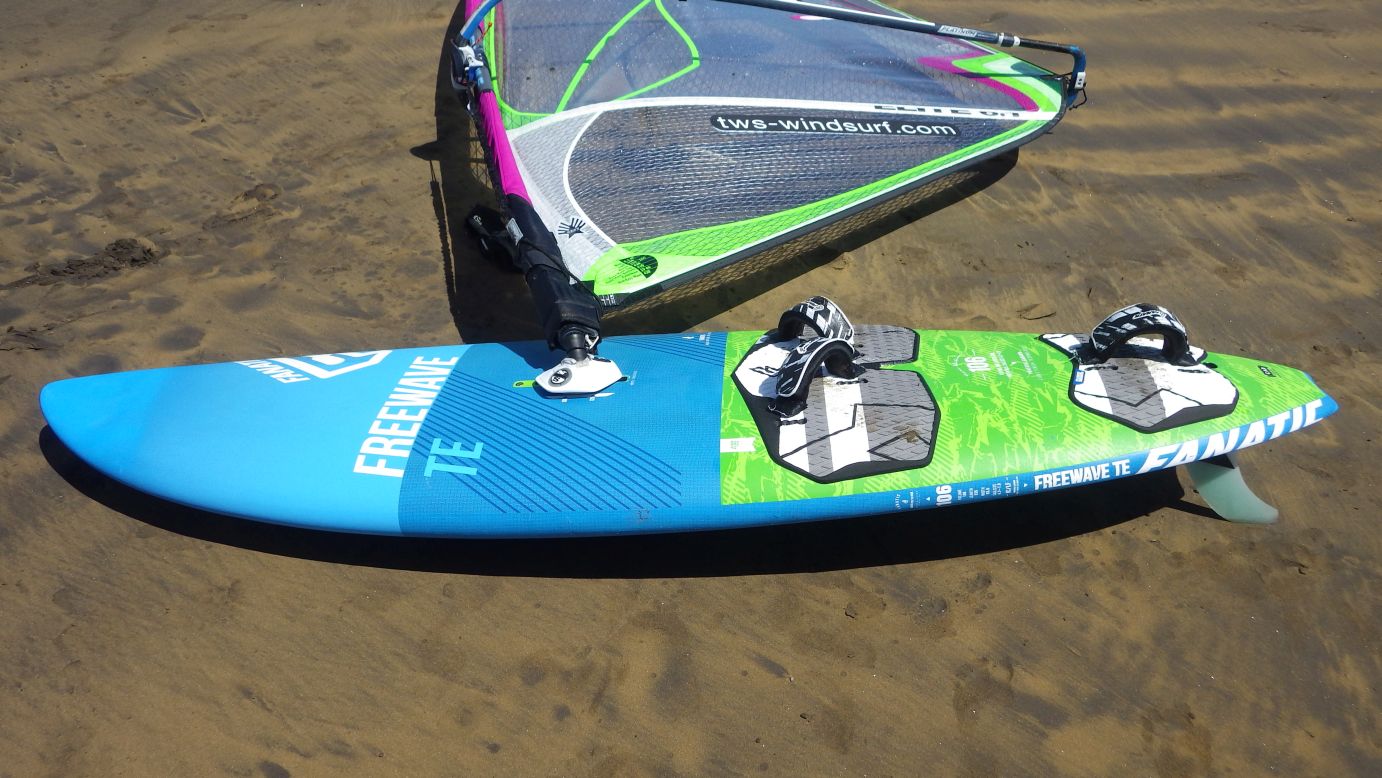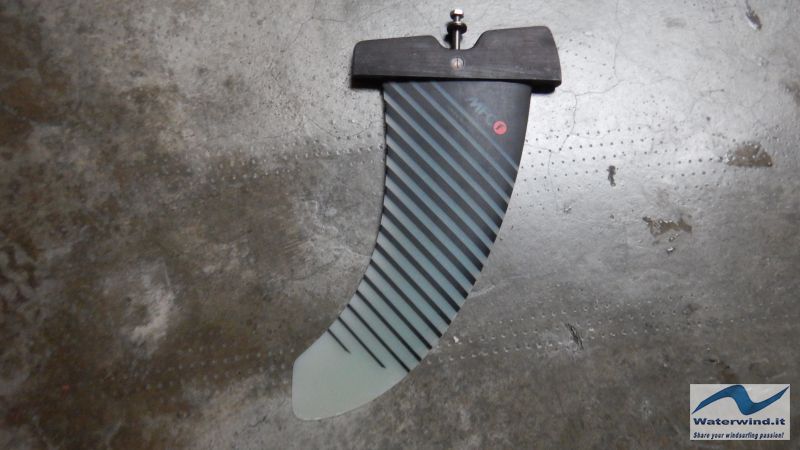For beginners, rigging a windsurf sail and preparing the board as best as possible, evaluating the result obtained, is an operation full of unknowns. We receive many requests in this regard in the Waterwind forum. Since an important part of our fun depends on the sailing and board performance in the water, we thought it could be useful to publish this article to help "young" windsurfers.
Windsurfing: getting your board and sail ready
Here we are. After you've chosen (thanks also to our beginner's guide to equipment choice), rented or purchased the equipment to get started, it's time to take action ... more or less!
Yes, because if we went to a specialized windsurfing center like those on Lake Garda, Maui, Jeri, Southern France or Sardinia, the board and the rig are ready to be put in the water, otherwise we will have to prepare everything for our first adventure. Let's see then this second case.
We will have: the bag in which the sail is kept, two fiberglass (uncommon nowadays) or carbon masts, better the two mast sections, a more or less elliptical tube, that is the boom, a base with pulleys, now always equipped with a extension tube, the mast foot, now always with a flexible joint to be screwed to the board, in the track rail.
The "piece of pipe" mentioned above, in aluminum (or carbon), is simply the "extension", and must be placed between the mast foot and the mast, and serves to lengthen the mast just enough for the sail we own. However, if the sail has a vario-top, that is a kind of plastic cap at the top to be adjusted with a ribbon, and the mast is just longer than the sail mast sleeve, the extension could not be needed, and the base could be enough (this usually happens on school sails and on small sizes of wave sails). However, it is not sure that with this solution, the best result in terms of sail performance can be obtained. The longer mast could be stiffer than that recommended one for the sail, which, therefore, could result in a more "nervous" behaviour in the water, with more sudden accelerations induced to the board.
As for the board, we will have: the board, the retractable centerboard or daggerboard (in the beginner boards), the fin attached under the tail, and the mast base, very often, by now, in modern equipment, integrated with the flexible joint (the whole stuff is called mast foot); it is a component that will be screwed into the track of the board, and connected only at the last moment to the rig.
Practical advice: regardless of the presentation that follows, it will be better to prepare and take the board to the beach first, complete with fin and mast foot, and the rig only later, especially in the presence of medium or strong wind, and in places where the sail, if left alone, could fly away.
PREPARATION OF THE SAIL
First of all, let's summarize the different phases, which will then be examined in detail:
1) I take out and unroll the sail;
2) I join the two pieces of the mast, top and bottom (with strong wind it might be better to do this first, to have the mast ready to put in the mast sleeve, and not to let the sail fly away);
3) I insert the mast from the bottom of the sail (sleeve base) until the tip is blocked in the end cap;
4) I insert the extension into the mast bottom;
5) I pass the downhaul line into the hole or pulley at the sail base, I build the downhaul tackle, and sheet the downhaul completely;
6) I insert the boom from the sail base, place it in the middle of the mast sleeve cut-out (but the exact position depends on the height of the rider and personal preferences), and close the boom handle lever;
7) I connect the boom terminal outhaul rope to the corresponding clew hole of the sail, and sheet it;
8) I'm ready: I connect the rig to the board to enter the water.
So, let's analyze them all. First we take out of the bag and unroll the sail, possibly on a smooth and not rough surface or better on a lawn; ah, it may seem stupid, but if we don't put the sail bag in the car (or somewhere else), at least tying it with a knot to a pole, it can disappear in the wind... The sails, and the others rig components too - boom, and extension - are generally designed to be more comfortably assembled on starboard tack, i.e. with the right side facing up (it is the side that gets the wind first when sailing on starboard tack), and not touching directly on the ground. In this way, for example, it will be easier for you to access the cleat of the extension, or to close the boom handle.
Then we take the mast bottom and top, and we join them, and then insert them gradually from the bottom into the mast sleeve. Be careful when joining the two mast pieces or - next step - when inserting the extension in mast, on a sandy beach; you risk to find them stuck, at the end of the session! Also for this reason, we advise you to rig, if possible, not on a sandy surface, but on a clean surface. If you really have to rig on the sand, make sure that the sand does not enter in any way into the joints of the various components. Furthermore, when you enjoy your session at sea, with sandy beach and sea bottom, it is almost mandatory to cover the junction between the top and bottom of the mast with grey tape, which prevents the sand from slipping inside the junction, forcing you to tedious operations at the end of the exit to separate the two pieces.
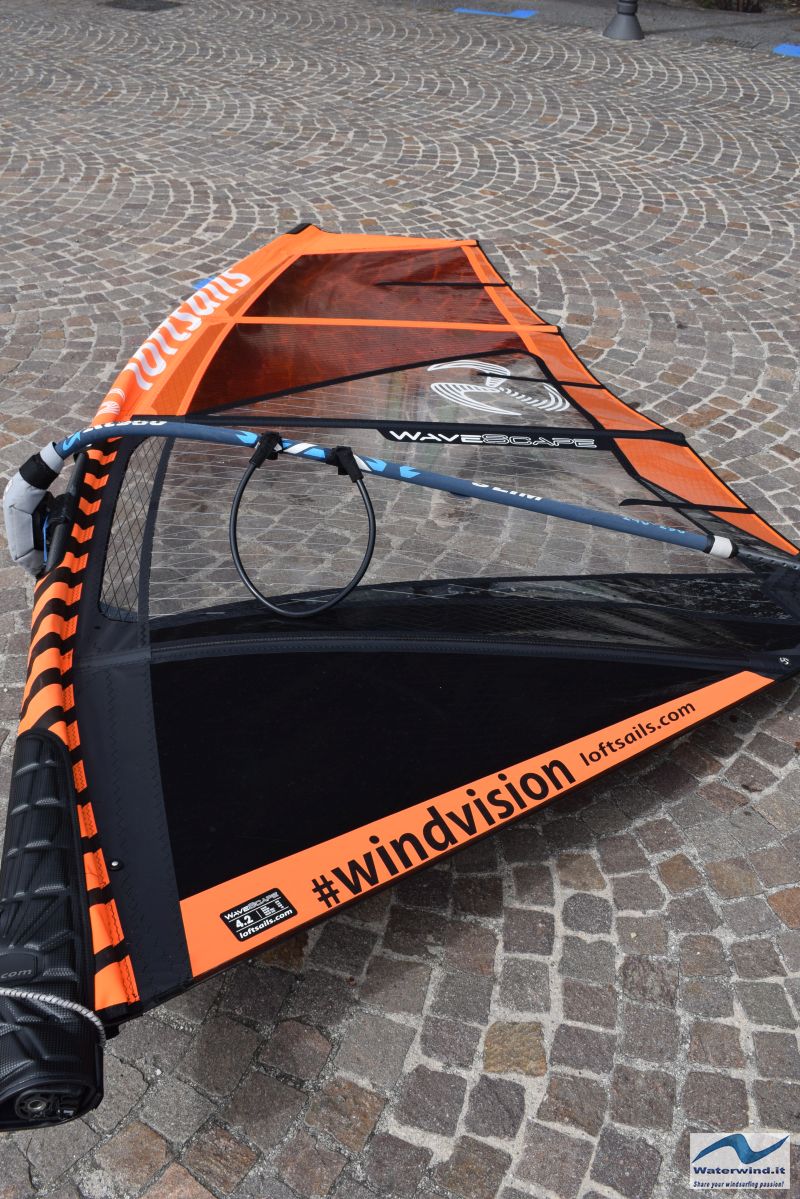
However, remember that we must first prepare the extension so that the sum of the length of the mast and the extension (set by us with the right length) corresponds to the size printed on the sail, and indicated as "luff". If, on the other hand, we use a sail with the vario-top - that is, with the end cap with adjustable length tape on the sail head - and a mast longer than the size written as luff, we will have to lengthen the cordura tape of the vario top as much as the difference between the mast (and extension set to the lowest size) and the luff.
Beware, however, that this is an acceptable operation only within certain limits! As the length of the mast increases, the bend radius under strain (IMCS) and its stiffness vary. If you use a mast that is too stiff, or with an IMCS not suitable for that sail, you will impair the performance that the sail will give you in the water.
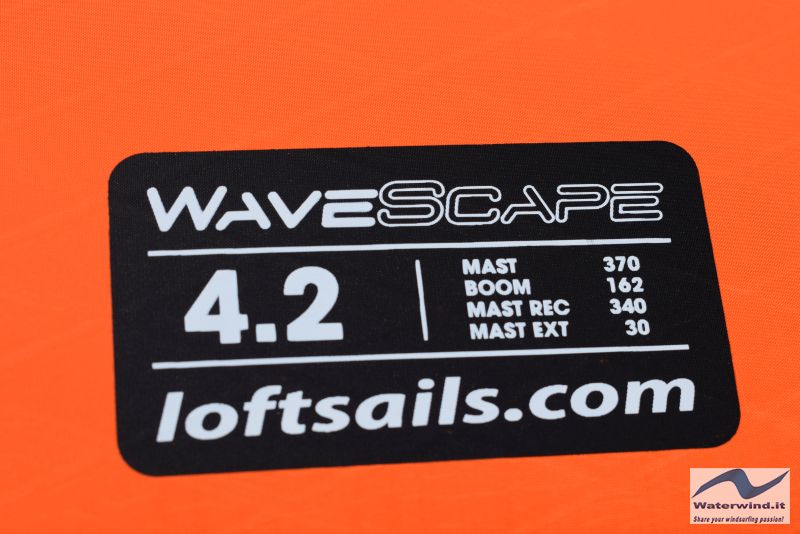
The mast will hardly have some small trouble getting into the mast sleeve, because the latter is curved, while the mast is initially straight; do not worry, it is not a defect of the sail, it is normal ... Generally, to avoid spoiling the mast sleeve, it is necessary to facilitate the sliding of the mast in the sleeve, first pulling the latter towards the base of the mast with the right hand, and then pulling it towards the mast base with the left hand (as mentioned, the sails are designed to be rigged on starboard tack) . Once the mast has been inserted all the way, check that the tip of the mast is blocked in the end cap of the sail, which may be external if the sail itself has a vario-top, or some sort of cap with an internal tip, placed at the top of the end of the mast sleeve (in this case, be very careful that no sand has entered between the tip and the mast top end).
Then check that all the sail battens are positioned on the same side of the mast; usually the brands recommend that the sail logo is legible (see above, about the best side to rig the sails), but the battens front ends are all under the mast. Now, it will seem that the battens are straining a bit the mast sleeve; but we still have to tension the sail, so don't worry.
After that, we take the extension (by now, as already said, almost all the extensions have the mast base already integrated) and insert it into the mast base, and we begin to pass the mast rope, or downhaul rope, attached to the extension, in the ring, or in the pulleys at the base of the sail; 3 steps are usually normal to build the tackle.

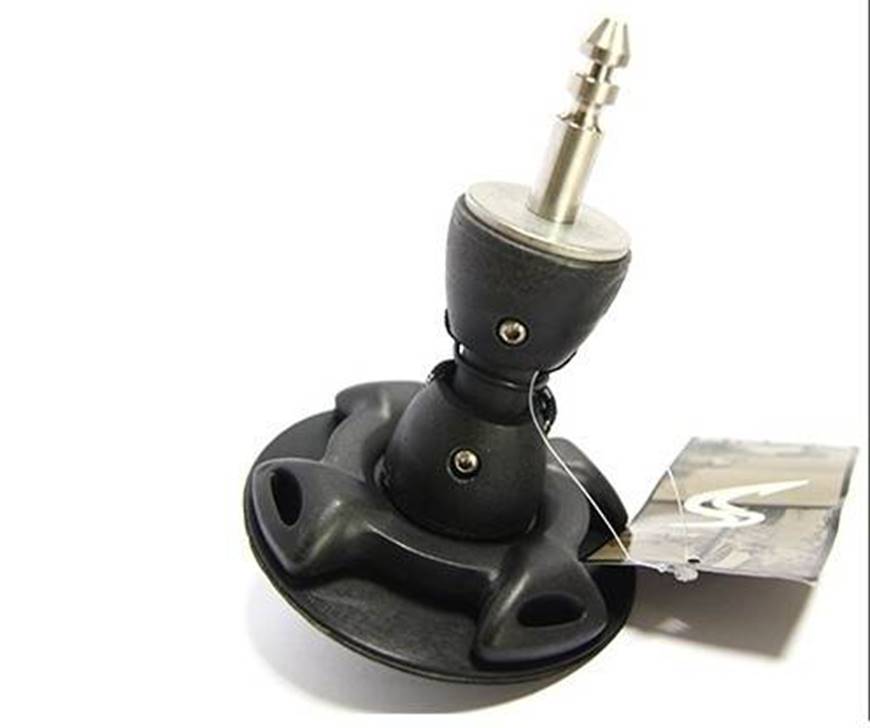
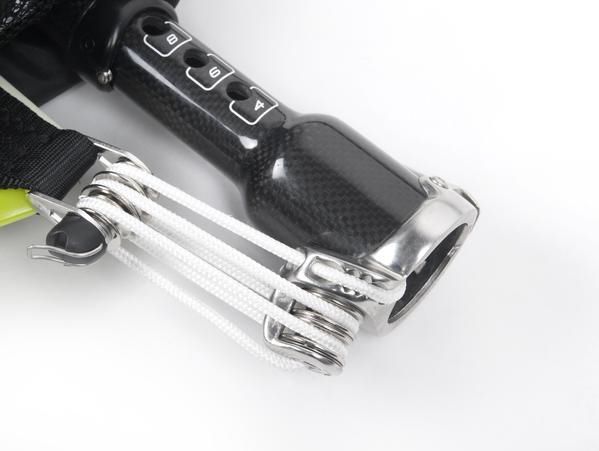
Before sheeting the downhaul, it is better to be sure that the coupling between the two parts of the mast is perfect, otherwise we could cause breakages to the mast, especially if it is with a high percentage of carbon (in case of using grey tape, at the junction, this step can be avoided, as the tape avoids that, during the operations described so far, the mast top and bottom may get slightly separated).
Now we will have to pull the downhaul with some strenght, positioning ourselves sitting on the ground, and pushing with one foot against the base of the mast, and then blocking the dowhaul rope in the cleat. Let's try to bend the legs and push, extending the one pointed against the mast base, avoiding working too much with the back muscles with the risk of getting a tear.
Indeed, it is advisable to use a cam puller, also obtained from an old broom handle (or any tubular metal tool), to which we will have made two close holes (in the case of the broom handle) in the center to pass the rope; or, if you are familiar with nautical knots, you can simply make two half hitches knots on the tubular tool, and just sheet. If we don't have these tools, we will be able to take advantage of the harness hook which can work discreetly for the purpose.
We will notice that the mast progressively bend and the sail partially loses its folds and indeed assumes a slightly bellied shape on one side; let's stop for a second, and before sheeting completely, check that the battens are all on one side, and if there is one left on the other, let's push it gently so that it goes on the same side of all other battens. How much to sheet the downhaul depends on the manufacturer's instructions, and more generally on the intensity of the wind during the session. The sails have a range of wind intensity, within which they can be best used, which depends also on the weight of the rider. With the downhaul little sheeted, the sail will flutter little at the leech (external and back profile of the sail, in the upper part), and will be more powerful. If you sheet a lot, the leech sail will be loosen quite a lot, and the sail will be less powerful. Between the two extremes, there is the intermediate trimming.
Then, we take the boom, which we will have stretched a little more, say up to a maximum of 10 cm more than the length written on the sail and/or its bag (see indication "boom"), we pass it from the base of the sail, and with the boom handle, that is the part equipped with the lever, on the mast side; lever that we will have completely opened before, easing the relative rope to the maximum (when you will be expert, you will learn to trim and stop in the clam cleat the right boom handle size).
Ah, if two "U" ropes are attached to the boom, one on each side, that is the harness lines, they must be facing downwards and outwards, that is towards the base of the mast, just as the uphaul must also come out from the lower side of the boom handle.
We position the handle at the appropriate cut of the mast sleeve, approximately in the middle if we are about 1.75 m tall, above if we are over (but this can vary from sail to sail), and put the mast inside the boom handle; then, take the handle rope loop and hook it onto the handle catch (like a large tooth); we close the external lever to block everything (reopening and sheeting a little the rope, if the block is a little loose).
We then block the clips of the boom end so that its length is that corresponding to the sail specifications (with time and experience, we will manage this adjustment almost autonomously depending on how much belly and power we want to give to the sail, in relation to the conditions of the exit that we are going to do). Then, we take the rope that is attached to the boom end, we pass it twice in the clew ring of the sail and in the holes of the boom end, and then we sheet this rope, called clew sheet, until the end of the sail gets in contact with the boom end. We roll up the line that advances around the boom end, and block the end, with a stop knot.
If, in any case, the sail touches the mast foot, probably it means that we have not correctly trimmed the set of extension and mast, according to the indications written on the sail as "luff" (it's always better to leave a few more cm/inches, to have a margin to further sheet the downhaul and de-power the sail, in case of need). Otherwise, our mast is a little softer than the best one for the sail.
Let's quickly check the measurements. If necessary, we ease the the downhaul, and lengthen the extension to the next longer size, and then sheet everything.
Once the base of the sail has been trimmed well, we quickly roll the excess rope around the base of the extension, without however interfering with the button to unblock the extension from the mast foot. The excess downhaul rope can be stored in the proper pocket that is inside the mast sleeve end of most sails.
Finally, only if the battens were not already correctly adjusted, with an Allen key (in all modern sails - generally supplied and kept in the sail bag), or by acting on the ribbon at the battens end (only for older sails), we tension them properly, that is with the aim of making the small folds disappear from the sail panel close to the batten sleeve. Do not over tension them (i.e., do not go beyond the afore mentioned precise goal), in order not to compromise the sail performance.
Important! At this point we must absolutely remember to wrap the elastic ring at the end of the uphaul around the base of the extension, in order not to enter into the water with the extension already joined to the mast foot, and then having to detach the rig from the board ... The uphaul should remain tense alongside the mast sleeve. It must not hang out of the sleeve. In this case, in fact, on the occasion of a waterstart, it would end up getting caught in the straps, delaying / hindering the maneuver performing. To do this, just make some knots on the uphaul (close to the boom handle side), which will also be useful for grabbing the line while you are lifting the sail fallen in the water.
Ok, the rig is now ready! It should appear properly stretched and with no obvious folds, with a more or less bellied shape of the sail in the boom zone, and a more or less loosen leech, in the upper part.
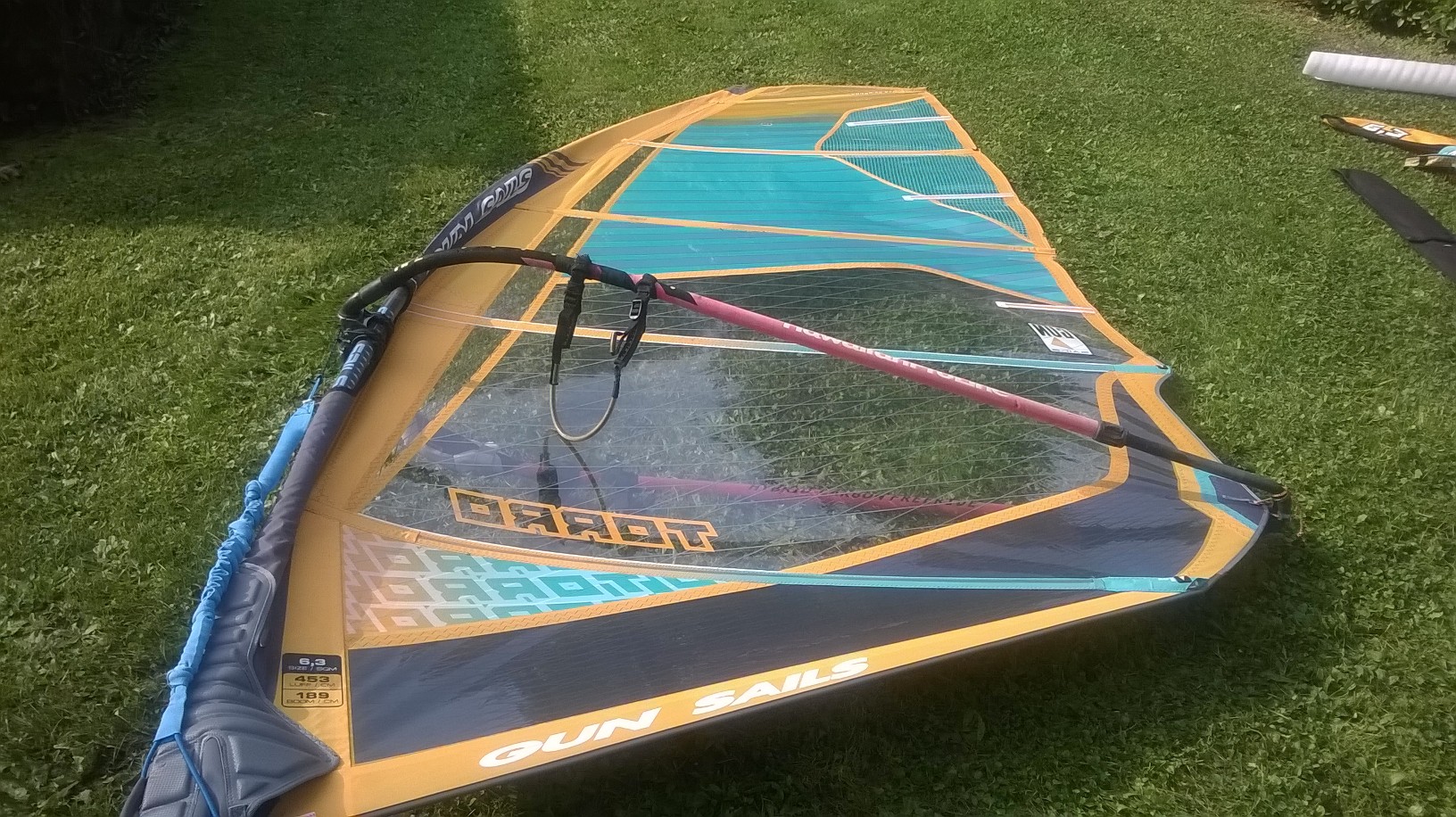
All this procedure, which, described as above, will seem a bit complex to you, with practice, will become easy and very fast; especially if 20 knots are blowing at the spot, and you are looking forward to go out! This is one of the positive aspects of windsurfing: in about 15 minutes the rig is ready.
Before going out, if you have time, we usually recommend a last general rig check, regarding the harness lines and boom position (as long as there is not such a strong wind to make this operation dangerous): put one foot on the base of the sail, pull the sail up, so that you have it vertical in front of you; be careful not to do this on surfaces that can damage the extension, or cause sand or earth to enter in it (the ideal is therefore a rubber or synthetic grass mat).
Check that the boom handle is more or less at the height of your sternum (so it will be as high as your shoulder, when the rig is vertical upon the board in the water). Furthermore (you will need this later in the water), you should also check that the harness lines are fixed correctly, i.e. more or less at the sail center, i.e. at the point on the boom where the wind force is concentrated: if the wind is light, you can manage the sail, holding the boom with one hand, and look for the hand position that guarantees you the possibility to hold the sail well balanced with that one hand. That will be the right position where to place the two ends of the harness lines (close to each other, or spaced, at most, by a fist).
Alternatively, you can find where to place the lines on the boom, with the sail laying on the ground horizontally, by lifting the boom with one hand. You will look for the center of gravity, that is the point that allows you to hold the sail balanced with one hand, without it tilting towards the ground on the mast or clew side. The center of gravity does not correspond to the sail center, but in this way you will identify an approximate adjustment for the position of the lines, which you will then refine in the water. In the water, regardless of what you have done on the ground, the fine trimming must be carried out with these references: if you have to pull more with the front arm to keep the sail when riding, it means that the position of the lines on the boom is too far back and you will therefore have to position them slightly forward (towards the mast); you have to do the opposite trimming, if you have to pull more with the back arm while sailing.
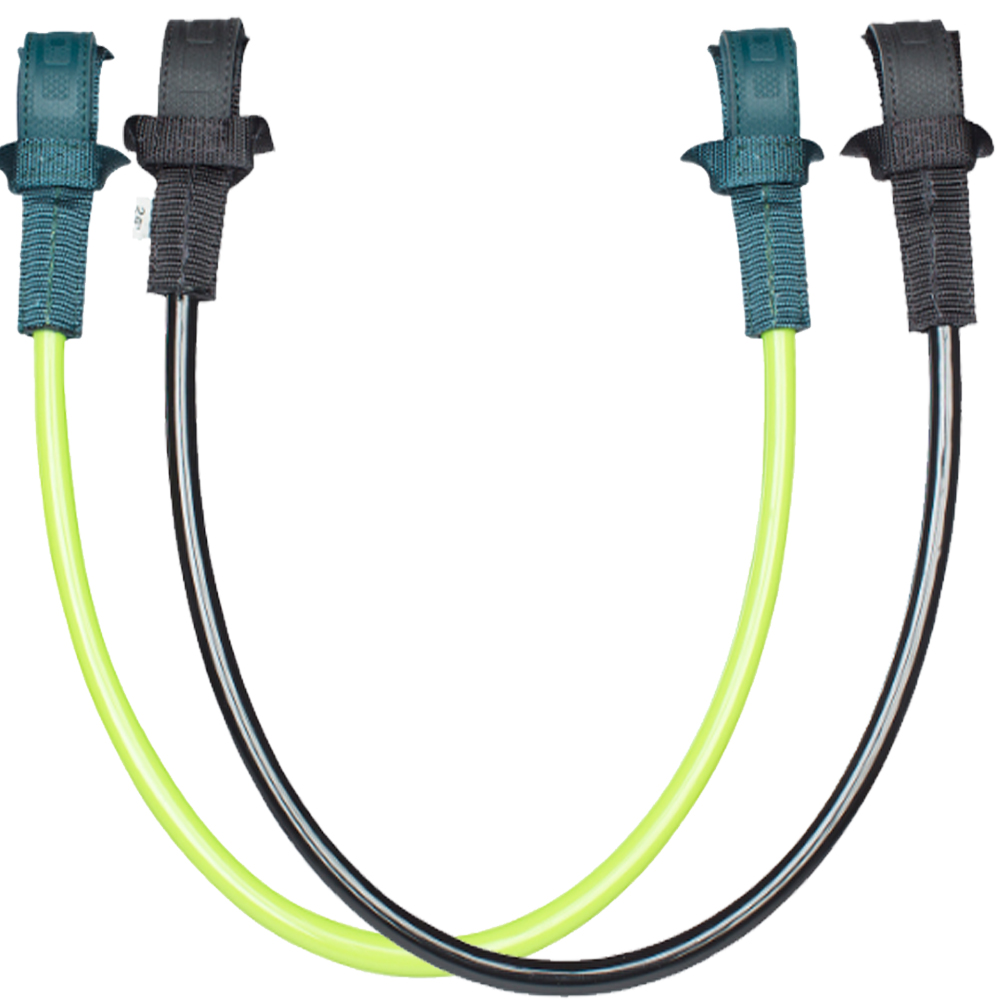
The length of the lines, on average, should be approximately such as to let the elbow enter the "u", holding, with the wrist bent, the boom in the center between the attachment of the two lines. Or, you can check the length of the lines, verifying that, in the water, when you are hooked, the lines go in tension just before the arms (which must remain only slightly bent), as otherwise they would work in place of the lines, and you would get tired. However, this adjustment, within certain limits, also depends on personal tastes and the windsurfing discipline you are doing (for example, in waveriding harness liness are generally kept long enough, to be able to easily unhook when needed). Also consider that long lines as indicated above are necessary to be able to easily start gliding: if you are hooked, and too close to the sail, you have no way to extend the front leg and push with it on the board, immediately behind the mast foot, to be able to make the board accelerate, transmitting to it the power of the sail (read, in this regard, the article about getting gliding).
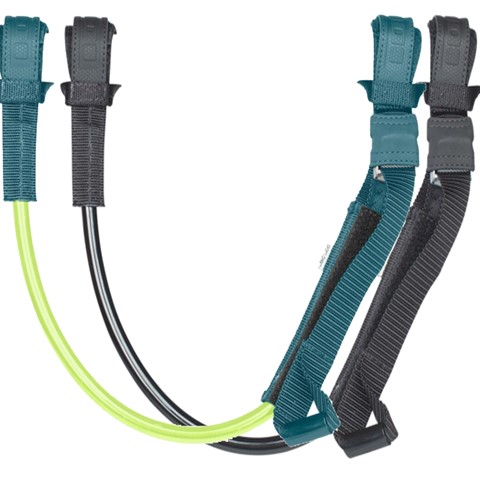
BOARD PREPARING
Now let's turn our attention to the board. Here there is much less to do: in the boards that are provided with it, check that there is the centerboard (daggerboard), and insert it and fold it in a fully retracted position.
Then, the rear fin must be mounted in its box, according to the box type of our board (in the photo below, the handy powerbox-type, which passes the board thickness). Probably, if you are reading this article, you will not yet be at the level of using multifins boards of low volume, but know that the boards can also have two, three, or four fins, and that today some boards have up to 5 boxes, in order to be set as trifin or quad (4 fins). Furthermore, there are different types of boxes: in addition to the aforementioned power-box, there are the Tuttle box (with two screws), Us-Box, Slot box, and also some specific boxes used only by some brands.
Then, screw, more or less at half way, in the special track, called mast track, the mast foot, which nowadays is usually integrated with a flexible joint. Different positions of the mast foot in the track (more forward or more rearward) are reserved for already more experienced riders who try to vary the behavior of the board according to the conditions (in a nutshell, forward foot for light wind and to facilitate the planing start; rearward foot, for strong wind and to have a more reactive board).
The straps (or foot straps). The three (in wave/freewave/freestyle boards), or, normally, four straps (freeride/slalom/race boards) are only used when you are planing, so there are many who even recommend unscrewing them and putting them aside, for the first time.
However, if you would like to prepare them for their use, as a beginner you will have to fix them in a fully forward position (towards the bow), and towards the center of the board, and check that the feet enter them in such a way that the fingers come out completely on the other side, avoiding that the strap reaches the ankle (risk of getting hurt). Also in this case, the fine adjustment of the width of the straps depends on personal preferences, and on the discipline (narrower in freeride / slalom, to have more control of the windward board rail with the heels, when gliding; wider in waveriding, to help you bearing away in the bottom turn, and more generally in frequent changes of direction).
Practical advice: if our beginner board - unfortunately only a few nowadays - has a ring or a hole in the bow, it will be useful to connect a small rope loop to it, to which, in case of recovery by rescue boats, it will be easy to connect even larger ropes. Moreover, someone (in the life jacket, harness, or somewhere else, has the good habit of carrying a 4 mm rope with him, to replace the downhaul or the outhaul line, or that of the boom handle line in case of breakage in the water).
VERY IMPORTANT: the vast majority of modern boards for medium and advanced riders, but now also many beginner boards, have a screw positioned in front or behind the mast track. This is the relief valve of the board you need, in sandwich boards, to prevent internal pressure changes, primarily due to the board overheating caused by the summer sun, but also to other factors (transport by plane or in the mountains, for example), may cause serious damage to the board. Therefore, it is essential to remember to close it as the last thing of the preparation operations, tightening well but without exaggerating, so that the small rubber gasket that is under the head of the screw makes a seal, and prevents the entry of any trace of water inside. Then, at the end of the day, but also every time we leave the board under the summer sun for more than a few time, we must remember to open it by slightly unscrewing it (just a few turns). In reality, you can also avoid unscrewing the valve, in order not to risk (as happened to many) to enter the water with the valve open, causing water to enter inside the board. This is possible, if the spots you frequent are spots where it is not excessively hot, or, if you are always careful not to leave the board in the sun for more than a few minutes (10-20 minutes), moving it promptly to the shade when you are not using it. If you happen to enter the water with the valve open, immediately return to shore, and leave the board in the sun for a few days (depending on how much water may have entered), with the valve completely unscrewed (and removed).
JOINING THE RIG AND THE BOARD, AND TRANSPORTING THEM TO THE WATER
We, finally, arrived at the time to link the rig to the board, and then enter the water. This operation must be done on the shoreline, obviously on the part where the shorebreak does not arrive, even if, in the case of relatively flat water, light wind, and shallow water in front of the shore, it can also be done in the water, bringing from the shore first the sail, and then the board (at the exit you will do the opposite: first the board is brought out of the water - as if left to the current, wind and waves, they could easily take it away - and then the sail, without delaying too long).
But how to get to the shore, if we rigged far from it?
In the case of beginner boards of generous volume (and weight), first, we will carry the board that we can carry under our arms holding it by the daggerboard, or the daggerboard track, if it has one; if it is without the daggerboard, we can carry it under our arm holding it by the mast foot (which, obviously, will be already screwed up); or, on our head upside down (but in case of long walkings, raised arms can get tired), tail forward, and holding it by the two front straps (or by the rail/edges); the latter mode requires attention, but has the advantage of offering less lateral surface to the gusts.
The sail must be carried as second (having, however, left it in a safe place, sheltered from the wind, in the meantime, especially in case of strong wind, because otherwise leaving it on the beach alone, while taking the board, it could fly away ...). In case of wind from the sea, we will carry it over our head, heading towards the water with the mast sleeve base forward, keeping one hand on the boom (more or less in the center) and the other on the mast. If the wind is side shore, we will carry it with the mast strictly pointing upwind.
Many, then, carry the sail, especially in case of wind not exactly from the sea, holding it with the mast resting on their hip, and holding the boom and mast, in order to balance it even with the wind help. When you will be more expert, and you will use smaller boards, you will learn how to transport rig and board, already joined together, to the shore.
The classic and most correct method to enter the water, from the shore is this: assuming a classic onshore wind (i.e. straight from the sea), we position the sail on one side with the handle and the mast into the wind (and towards the sea), and the clew leeward, holding the rig by the boom with one hand, and take the board with the other hand, grabbing it by a front strap, with the stern windward. If the wind is not perfectly onshore, we still maintain the aforementioned orientation of the various components with respect to the wind.
So, to enter into the water, let's now join the board and rig, placing the board vertical (perpendicular to the beach) with rail touching the ground, to insert the mast foot pin into the extension, up to hearing the "clack", which indicates the block. We check that the end of the uphaul line has remained correctly wrapped around the extension. Now let's take, facing the ground (i.e. with your back towards the wind), the board for the front upper strap, and the rig for the boom near the handle. If our board doesn't have any straps, let's take it from the the daggerboard box (hull side), or from the daggerboard itself, after pulling it out a bit. After that, we lift everything and, walking slowly backwards, with caution and always checking in all directions, let's head into the water, walking until the water gets more or less to our knees. If in carrying it, we realize that the tip and / or leech of the sail, the boom end, or the board crawl on the ground, we proceed with caution, checking that there are no sharp stones, or rocks, or other dangers, in which case it will be better to consider a separate transport in the water of the sail, first, and of the board, then.
Now, we are ready to begin our session.
Practical advice: if we have to leave the equipment on the beach for a while, for example to rest a bit, remember to position the board and sail first of all outside the undertow action, that is, in dry conditions, and furthermore, always with the sail downwind of the board; better, then, if we position the board upside down, or, if with deck up, with the fin planted in the sand. If the board were not connected to the rig, it is also customary to insert the board between the boom and the sail (with the base of the mast always oriented in the wind), planting the fin in the sand.
Respecting these tips is mandatory in case of strong wind, but it is not bad to learn how to position the equipment correctly even in light winds. Let us remember that a crazy rig that flies away can cause damage to people and things, so never leave it alone and disconnected from the board in full power wind, or connected, but upwind of the board.
Hang loose. Nico e Fabio
Also check instructional video page, for further and useful tips.
Without your Support, Waterwind wouldn't exist. Become our supporter!
If you want to advertise with us, read here, or contact us.
Collaborate with us. Read here!
Buy our Gadgets! Visit our YouTube channel!




